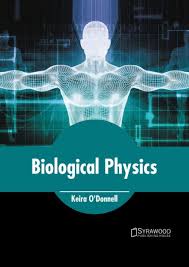Ph.D. in Biological Physics: Introduction, Admission, Registration, Eligibility, Duration, Fees, Syllabus 2024

Introduction:
A Ph.D. in Biological Physics is an interdisciplinary research program that merges the principles of physics with biological systems. It aims to provide a deeper understanding of life’s processes through the lens of physical science. Candidates explore the quantitative aspects of biological phenomena, employing theoretical and experimental physics to unravel the complexities of biological structures and mechanisms.
Admission Process:
- Submission of an online application with personal and academic details.
- Provision of transcripts showing a strong background in physics and biology.
- Letters of recommendation from academic or professional references.
- A statement of purpose outlining research interests and career goals.
- Scores from relevant standardized tests, such as the GRE, if required.
- An interview with faculty members may be part of the selection process.
Eligibility:
- A bachelor’s degree in physics, biology, or a closely related field.
- A strong foundation in mathematics and physical sciences.
- Research experience in a relevant area is highly recommended.
- Proficiency in English, demonstrated through TOEFL or IELTS scores for non-native speakers.
- A master’s degree may be preferred or required by some institutions.
- Publications in peer-reviewed journals can enhance candidacy.
Completion Time:
Typically, a Ph.D. in Biological Physics takes 4-6 years to complete. The journey begins with coursework and rotations in various labs to find a suitable research fit. As students progress, they focus on their dissertation research, which involves formulating hypotheses, conducting experiments, and analyzing data. The culmination is a thesis defense, where candidates present their findings to the academic community.
Career Opportunities:
- Academic positions as professors or researchers in universities.
- Research scientists in biotechnology or pharmaceutical companies.
- Roles in governmental agencies focusing on public health and policy.
- Opportunities in medical physics, such as developing medical imaging technologies.
- Positions in data analysis or computational modeling.
- Entrepreneurial ventures in biophysics-related startups.
Syllabus:
- Advanced courses in statistical mechanics and thermodynamics.
- Study of molecular biophysics and cellular mechanics.
- Training in computational methods and data analysis.
- Electives in specialized topics like neurophysics or biopolymer physics.
- Research methodology and ethics in scientific research.
- Seminars on current developments in biological physics.
Internship Opportunities:
- Research internships in university labs.
- Internships in industry R&D departments.
- Opportunities at national laboratories or research institutes.
- Collaborative projects with medical research facilities.
- International research exchange programs.
- Internships in biophysics-related startups.
Scholarship and Grants:
- University-funded fellowships for promising candidates.
- Government scholarships for research in specific areas of interest.
- Grants from scientific societies and organizations.
- Funding from industry partners for applied research projects.
- International scholarships for study abroad opportunities.
- Teaching assistantships and research assistantships.
FAQs:
What background is needed for a Ph.D. in Biological Physics?
A strong foundation in physics and biology, with research experience being highly beneficial.
How long does it take to complete the program?
Typically, 4-6 years, including coursework and research.
Are there opportunities for interdisciplinary research?
Yes, the field encourages cross-collaboration between various scientific disciplines.
What career paths are available after graduation?
Academic research, industry positions, governmental roles, and more.
Is funding available for Ph.D. students?
Yes, there are various scholarships, grants, and assistantships available.




